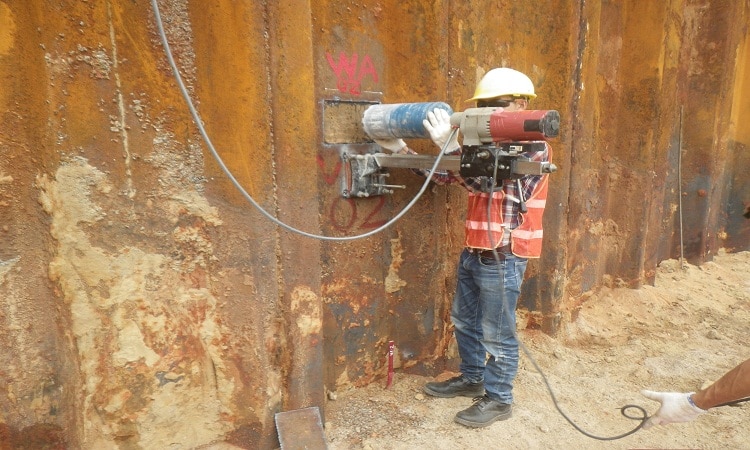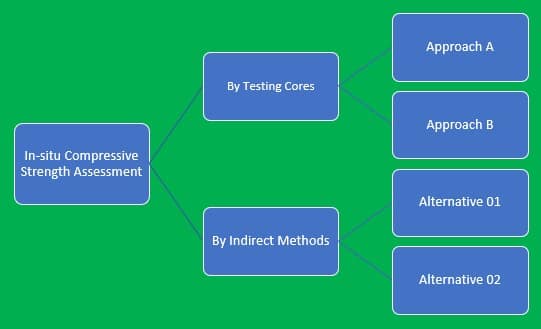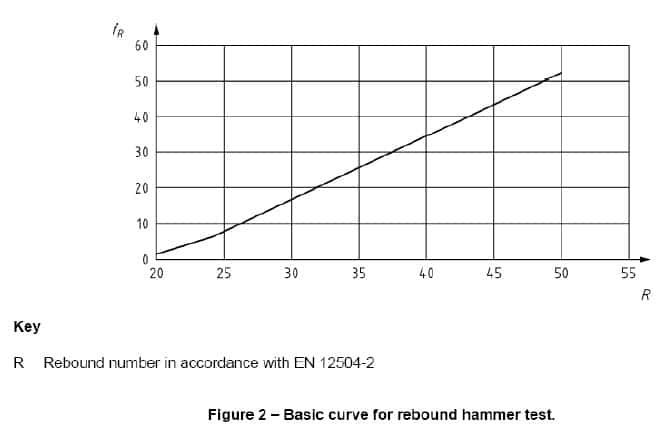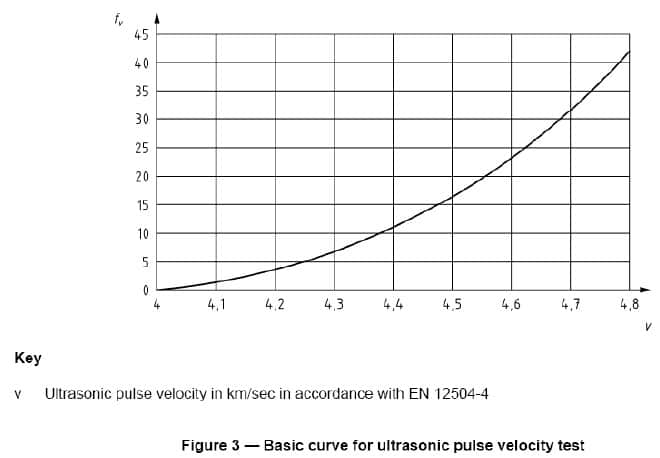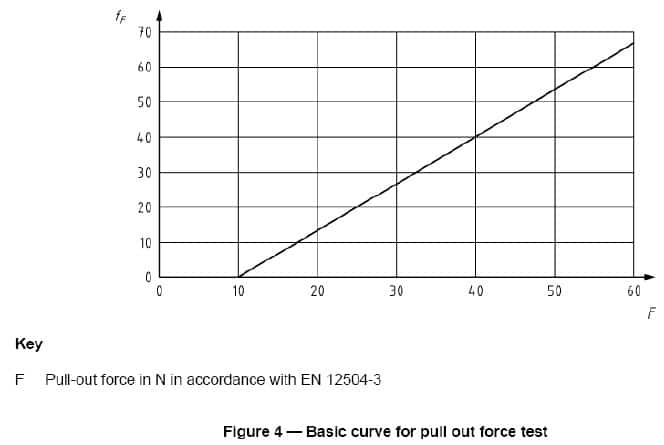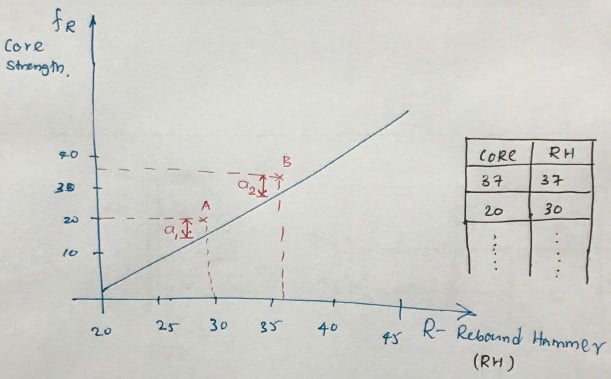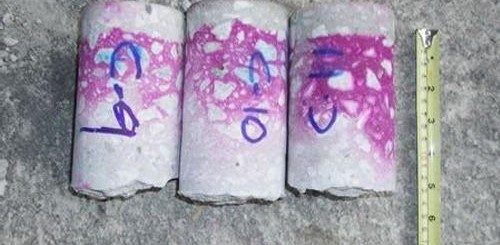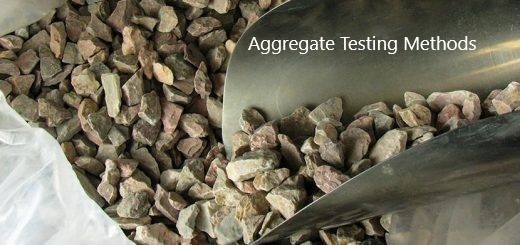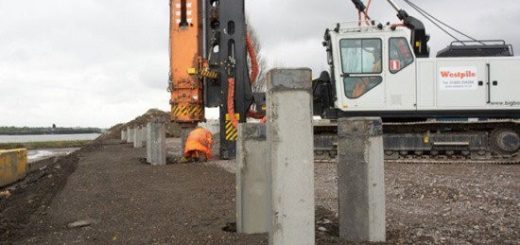Assess In-Situ Compressive Strength of Structure
The compressive strength of concrete and yield strength of the steel are two main material strengths that are to be tested during the construction.
The yield strength of the reinforcements is tested before they are used for the construction as per the project specification or design code requirements. However, the compressive strength of the concrete was tested after the casting of the concrete.
The samples taken during the concrete pouring are tested. The method of testing and test criteria are discussed in the article Compressive Strength of Concrete and Concrete Testing.
The usual testing of concrete cubes or cylinders is done to make sure the concrete has developed the strength considered for the design from the samples taken at the concrete pouring.
There are other occasions where we test concrete to check its strength.
- When the conformity of the concrete tests is doubtful. Further testing will be done to check the strength.
- When assessing the strength of the existing structure for further use or modifications.
When structural assessments are done, it is required to obtain the compressive strength of the concrete in order to check the structural capacity of the element. In addition, when the retrofitting is also done, it is vital to know the compressive strength of the concrete.
This article mainly concentrates on the assessment of the in-situ compressive strength of concrete. And the guideline specify in EN 13791:2007 to assess the in-situ compressive strength is discussed in detail.
Firstly, let’s some to the terms we used in this discussion
- In-situ compressive strength – Equivant strength of a standard cube or cylinder
- Characteristic in-situ compressive strength – Valu of in-situ compressive strength below which 5% of the population of all possible strength determinations of the volume of concrete under consideration are expected to fall – code definition.
- Characteristic Strenght of Standard Specimen – Cube or cylinder strength tested in the usual manner. It is from the samples taken at the site and cured till testing.
The ratio between the Characteristic in-situ strength to the Charatericti strength of standards specimen is 0.85.
The variation of cub strength and site concrete strength is due to the different environments available for strength development. The samples taken (concrete cubs or cylinders cast) are fully water cured by submerging until testing is done. However, the normal concrete at the site does not get that much treatment. Further, the compaction of the concrete cube or cylinder could be higher than the concrete poured at the site.
Further, it should be noted that the ration 0.85 or (1/0.85 = 1.18) is part of γc which is 1.5 as per the BS and EN standards.
Let’s see how we can assess the in-situ compressive strength.
Assessment of In-Situ Compressive of Concrete
The following figure indicates the available methods to proceed with the desing.
Now let’s discuss each method in detail.
Two methods available to evaluate the strength of the concrete are based on the availability of the test results and as per the extent that we can carry out the testing.
Evaluation of strength by “Testing of Cores” is the Direct Method where we used the core strengths directly to evaluate the in-situ Characteristic strength of concrete.
Evaluation of In-Situ Characteristic strength of concrete using the Indirect Methods such as Rebound Hammer, Ultra Sound Velocity and Pull-out Test (Nondestructive and semi destructive) is called as the Indirect Method.
An indirect method can be used for the larger area where many cores are required which results in high cost and as a reduction to the damage caused by coring.
Further, it should be noted that we can use only the direct method (straightforward and easily) when it is applicable depending on the area that the structural assessment is done.
By Testing Cores [Direct Method]
There are two approaches namely Approach A and Approach B.
Before discussing the two approaches, let’s learn the background of this testing.
- The extraction of cores shall be as per the relevant code of practices. Dimensions and tolerance shall be within the specified limits.
- The number of cores to be taken for testing depends on the area/volume of concrete, the purpose of testing, etc. However, at least one core shall be taken at each test location.
- The assessment of in-situ compressive strength for a particular test region shall be based on at least three cores.
- This method applies to the core with a nominal diameter of at least 100mm. The number of cores to be tested should be increased when the nominal diameter less than 100mm as specified in EN 13791.
Now, let’s discuss the two Approaches under the core testing method to evaluate the in-situ compressive strength of concrete.
In-Situ Strength by Core Testing: Approach A
- At least 15 cores shall be available to proceed with this method.
- The in-situ characteristic strength is given by the following equations and the lowes value shall be taken.
fck,is = fm(n),is – k2 x s
Or
fck,is = fis,lowest + 4
where
fck,is – Characteristic in-situ compressive strength
fm(n),is – Mean in-situ compressive strength of n results
fis,lowest – Lowest in-situ compressive strength test request
s – Standard deviation of the test results or 2N/mm2, whichever higher
k2 – From national provisions or taken as 1.48 if no value given.
- If it has appeared that the core strength values are from different grades of concrete, the test region may be separated into two test regions.
In-Situ Strength by Core Testing: Approach B
- This approach is implemented when the number of core test available are 3-14.
- The in-situ characteristic strength is taken as lowes of the following.
fck,is = fm(n),is – k
Or
fck,is = fis,lowest + 4
The value of k can be obtained from the following table. Here, n is the number of test results.
| n | K |
| 10 to 14 | 5 |
| 7 to 9 | 6 |
| 3 to 6 | 7 |
- This method generally gives low estimated characteristic strengths lower than that of more results.
- This method shall not be used in cases of dispute over the quality of concrete based on the standard test data.
By Indirect Methods
An indirect method is used on other tests such as rebound hammer, ultrasonic pulse velocity, and pull-out together with core tests after developing a correlation between them.
The testing with indirect methods measures property other than strength. Therefore, it is required to develop a relationship between indirect test data and the compressive strength of cores.
There are two alternatives.
- Alternative 01: Direct Correlation with Cores
When there are adequate core test results(at least 18 core test results), a correlation can be developed with the other tests rebound hammer, etc. as discussed in this article.
Thus, the in-situ compressive strength of the concrete can be obtained in other locations.
- Alternative 02: Calibration of Base Curve based on limited test data and Determine the Strength
The previously developed-based curve will be modified based on the test results obtained for cores and indirect tests. Then the in-situ compressive strength is obtained from the modified curve as per the indirect test results in other locations.
Key feature of Indirect Method
- This method can be considered as an alternative to the core testing method discussed previously. When the core testing is done the structural elements are damaged and as a result, the integrity of the structure could be lost.
- The use of the indirect method is cost-effective and less time-consuming. Further, testing is also easy compared with the core tests.
- Since we are taking a limited number of cores, the cost will also be reduced.
- Indirect methods are used after calibration with cores.
Alternative 01: Direct Correlation with Core Tests
- Required at least 18 pairs of results ( 18 core test results and 18 indirect test results) to establish a relationship. Pairs of results to be taken at the same location.
- Testing shall be done at least 15 different test locations covering the area.
- Higher the number of tests better the accuracy.
- The test data is used to evaluate the in-situ compressive strength of the concrete.
- Best fit line or curved used to determine the strength.
- The lower value obtained from the following equations is considered as the in-situ compressive strength.
fck,is = fm(n),is – 1.48 S
Or
fck,is = fis,lowest + 4
Where the S is the standard deviation shall be calculated from test results or 3 N/mm2, whichever higher value.
Alternative 02: Use the relationship between Cores and Based Curve
- At least 9 pairs are required
- Can be used for normal concrete having the same set of material and manufacturing process
- Modify the Base Curve given in the EN 13791:2007 (E) for each indirect test method to obtain the relationship with core test results.
- The following procedure is used to develop the relationship.
- The select region containing 9 pairs of test results.
- Each location 9 core results and one of indirect tests method 9 results.
- Calculate the difference between the core test result and the relevant value given in the basic curve. δf =fis – fR,V or F . [where R- rebound hammer number, V – Ultrasonic pulse velocity and F – Pull-Out force]
- Calculate the amount by which the basic curve should be shifted. Δf = δfm(n) – k1 x s , where k1 is obtained from the following Table and S is the standard deviation.
Number of Paired test Results, n Coefficient, k1 9 1.67 10 1.62 11 1.58 12 1.55 13 1.52 14 1.50 ≥15 1.48 - The basic curve has set in a low position. Therefore, the shift is always positive.
- Further, we can use the following formulas to convert the indirect test value to the values in the basic curve without doing all the above calculations. Once we calculate the value, we can use the relevant figure to obtain the in-situ compressive strength.
Rebound Hammer
fR = 1.25xR -23; 20≤R≤24
fR = 1.73xR -34.5; 24≤R≤50
Ultrasonic Pulse Velocity
fv = 62.5v2 -497.5v+990; 4≤v≤4.8
Pull-Out Force
fF = 1.33(F -10); 10≤F≤60
The following figure (Basic Curves) shall be used used to develop the relationships of each indirect test method.
Basic Curve Rebound Hammer Test
Basic Curve Ultrasonic Pulse Velocity Test
Basic Curve Pull-Out Test
Worked Example: Develop a relationship with Basic Curve – for Rebound Hammer
As discussed, above we need to develop the relationship between the core result and Rebound Hammer results from the basic curve.
The following figure indicates the development or relationship.
The above figure indicates only a plot of two points. However, as discussed above, we need at least 9 pairs of results. You have to plot at least nine points.
The above chart can be obtained from EN 13791:2007 (E), Figure 2 – basic curve for rebound hammer test.
- Once you plot all the results(at least nine pairs of results at the same location), calculate the a1, a2,…a9.
- The calculate the mean of a1, a2,…a9, and the standard deviation of the sample.
- Then calculate the Δf = δfm(n) – k1 x s, where k1 is obtained from the above table.[ for nine results k1 = 1.67 Table and S is the standard deviation calculated above.
- Δf which is now known, the shift of the basic curve. Plot the shifted curve for assessment.
- Get the relevant core strength( in-situ strength) for other available rebound hammer test results.
With these methods, can evaluate the site compressive strength of concrete. In addition, EN 13791:2007 provides the guidelines to evaluate the strength of concrete when conformity of the concrete based on standard testing is in doubt.
Further, you may study articles on different types of destructive testing and non-destructive testing to enhance your knowledge.
In addition, the guidelines given by concrete society could be followed.
Limitation of Using Rebound Hammer for these Tests
- As we discussed, these tests measure the property, not the strength. When the surface hardens changes due to the other environmental factors, there is less possibility of obtaining accurate test results.
- Carbonation of concrete increases the surface stiffness and results in increasing rebound hammer number. Then the actual condition may not be reflected.
- The rebound hammer test is more appropriate for the new concrete than the old concrete that has caused the changes in the surface condition.
- The dampness of the concrete surface also affects the rebound hammer number.
- Degree of compaction
Some important things from EN 13791 for Desing Engineers
- There is a strong deviation in the test cube and concert tested from the structure. This is mainly due to the curing process. Test cube we put submerge in the water until testing and structure we do curing.
- A reduction of 15% in strength is to be considered as EN 13791.
- There is a higher material safety factor-like 1.5 is used for the concrete whereas 1.05 is suggested for reinforcement steel in BS 8110 Part 1-1997. The above discuss reduction also could have been considered for this.
- Though we consider characteristic strength for the design, actually at the site a lesser strength is available.

